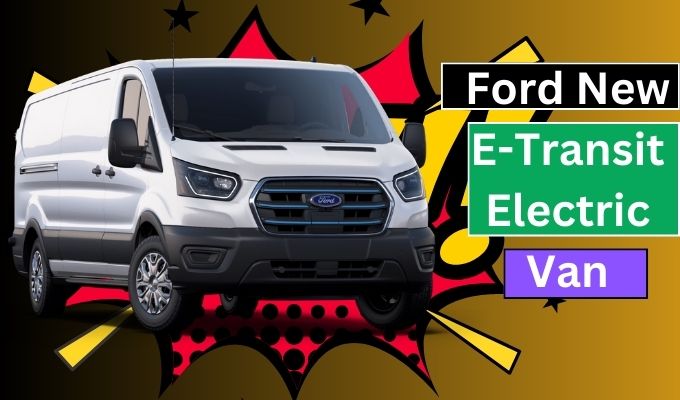Ford New E-Transit Electric Van
Ford has begun selling its new electric vans in the United States, and they are way, way better than the previous version, though still a little pricey.
Ford, they’re pretty much the only company really selling any decent electric vans in the United States.
These EV or these electric vans will be available in various countries around the world pretty soon.
Expanding Availability and Utility
I believe it’s Ford plan to sell them elsewhere not just in the US. So they’ve actually started orders. You can order one now in the US, the cheapest version.
They all pretty much have the same range, but you can get bigger versions that still use the same battery pack, so that will lower the range.
But the cheapest version costs US$51,000. However, because it qualifies for the EV incentives of US$7,500, that means the price is actually 43,500.
It isn’t exactly cheap, but That seems like a reasonable price for this type of vehicle.
Now, it actually has up to 487 cubic feet of cargo volume, and it only costs $1,000 more than the previous version, which is pretty good when you consider the fact that it has much more range.
Efficient Charging Solutions
In fact, it has 32% more range and much faster charging. The 2024 e-transit has a bigger 89 kilowatt hour battery pack. It’s not an LFP battery.
I believe it’s actually an SK Innovation battery pack, which is made in the US, and that’s why this vehicle qualifies for the full $7,500 tax incentive.
Now, the previous battery pack was only a 67 kilowatt-hour battery, so this battery is now 22 kilowatt-hours bigger.
That gives it a range of around 160 miles. So yeah, not a lot of range.
The efficiency doesn’t seem to be that great, but Ford says it is very good for use cases such as refrigerated delivery.
Enhanced or improved e-transit has dual onboard charges that deliver a 22% faster charge time using Ford’s Pro 80 amp Series 2 charger and Ford Pro charging software.
Charging at level 2 brings it from zero to fully charged in around six hours at home, making it ideal for charging at your house overnight.
Charging in six hours means that by the time you get up in the morning, it’ll have a full charge.
How fast does it charge on a DC charger? It charges at 176 kilowatt, which is a pretty big improvement.
The previous version charged at 115 kilowatt. What that means is you can get 67 miles of range from a fast charger in 15 minutes.
If you plug it in for 15 minutes, you can get another 67 miles. It’s selling about 110 kilometers, but that’s still not bad.
And it does mean that if you compare the 15 minute charge of the previous version, it’s 50% faster. That’s a pretty decent improvement.
Future Prospects and Market Impact
Now, hopefully, Ford’s generation 3, which I’m going to guess will be out in maybe a year or two, will up the game a bit because I think in China, there’s significantly better electric vans at around this price.
Anyhow, There are three different versions apparently, there is two lengths, three roof heights, and three different body styles.
And yeah, there’s lots of different size. So the range figures that I’ve quoted here are going to change depending on the size of the vehicle and the roof height.
Obviously, having a higher roof height, you’re going to get more wind blockage, and it’s going to reduce your aerodynamic efficiency.
But all in all, it’s a good upgrade from Ford, considering they haven’t really changed the price.
Inflation, if you think about it, they’ve probably increased the price less than how much inflation has gone up since the old version was launched.
Actually, it’s a bit cheaper than the previous version when you take that into context. It qualifies for the full EV incentive.
It’s probably going to be not much more expensive than a gasoline-powered or diesel-powered similar van.
Guys, what do you think about the new Ford e-Transit? I think it’s great to see Ford doing this.
I mean, this is actually becoming a significant part of Ford’s business.
It’s worth mentioning, though, that Ford did lose about $120,000 on every EV it sold in the first quarter of this year.
